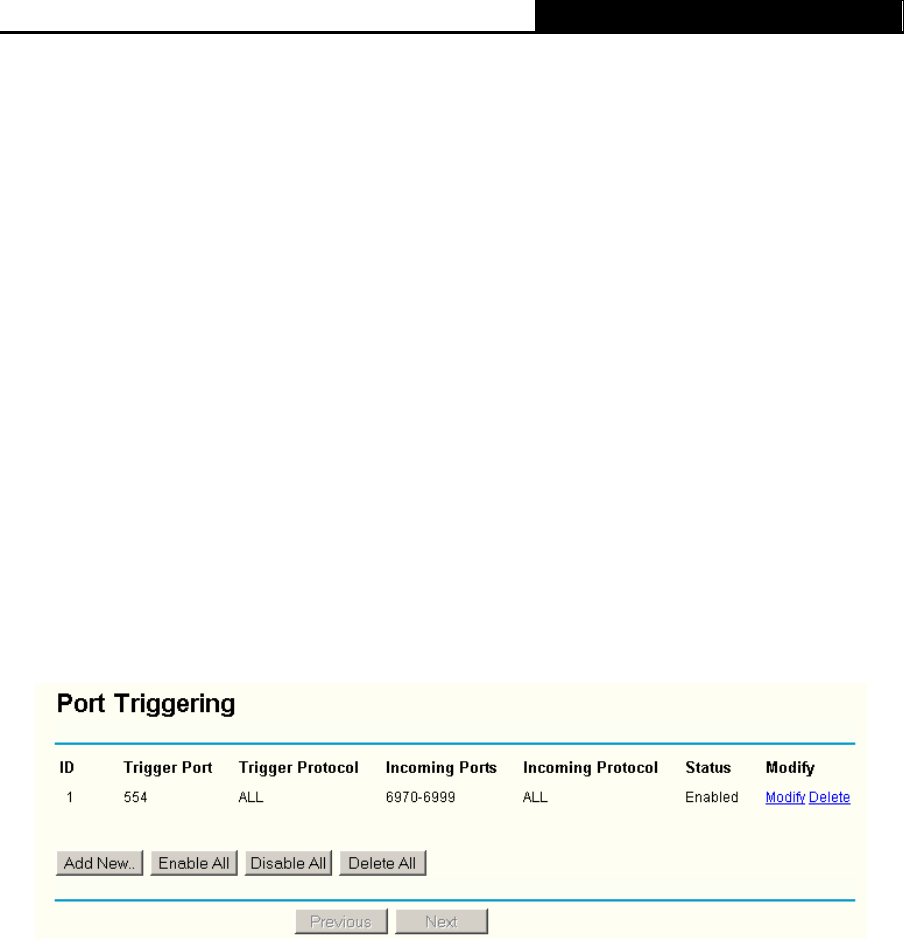
TL-WR340G/TL-WR340GD 54M Wireless Router User Guide
35
2. Modify the information.
3. Click the Save button.
Click the Enable All button to make all entries enabled
Click the Disabled All button to make all entries disabled.
Click the Delete All button to delete all entries
Click the Next button to go to the next page and Click the Previous button to return the previous
page.
)
Note:
If you set the virtual server of service port as 80, you must set the Web management port on
Security –> Remote Management page to be any value except 80 such as 8080. Or else there will
be a conflict to disable the virtual server.
3.7.2 Port Triggering
Some applications require multiple connections, like Internet games, video conferencing, Internet
calling and so on. These applications cannot work with a pure NAT router. Port Triggering is
used for some of these applications that can work with an NAT router. You can set up Port
Triggering on this page shown in
Figure 3-30:
Figure 3-30 Port Triggering
Once configured, operation is as follows:
1. A local host makes an outgoing connection using a destination port number defined in the
Trigger Port field.
2. The router records this connection, opens the incoming port or ports associated with this
entry in the Port Triggering table, and associates them with the local host.
3. When necessary the external host will be able to connect to the local host using one of the
ports defined in the Incoming Ports field.
¾ Trigger Port - The port for outgoing traffic. An outgoing connection using this port will
"Trigger" this rule.
¾ Trigger Protocol - The protocol used for Trigger Ports, either TCP, UDP, or All (all
protocols supported by the router).
¾ Incoming Ports Range - The port or port range used by the remote system when it
responds to the outgoing request. A response using one of these ports will be forwarded to


















